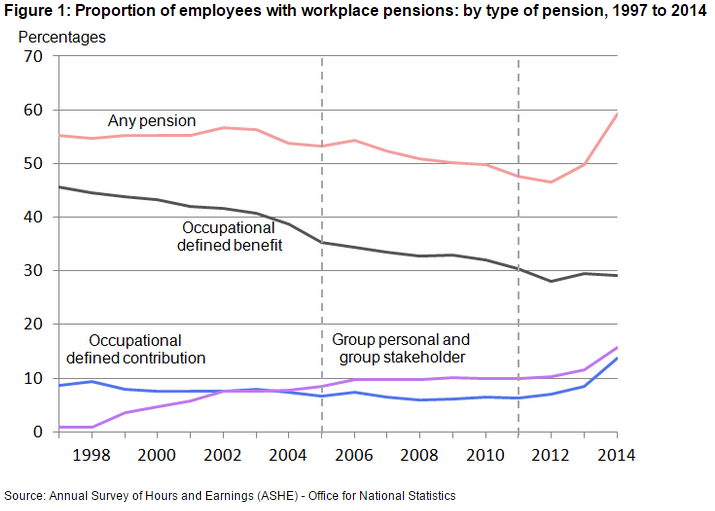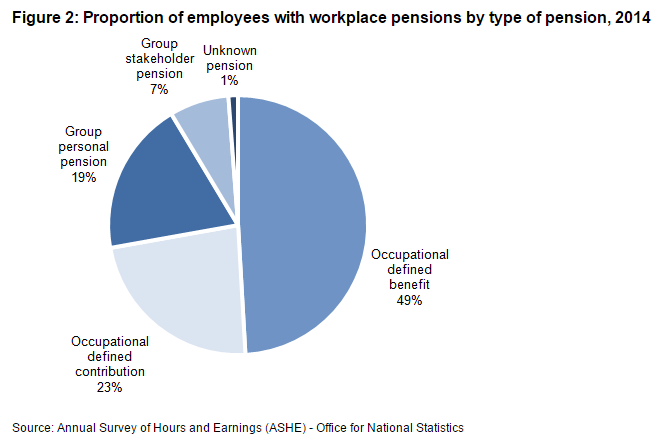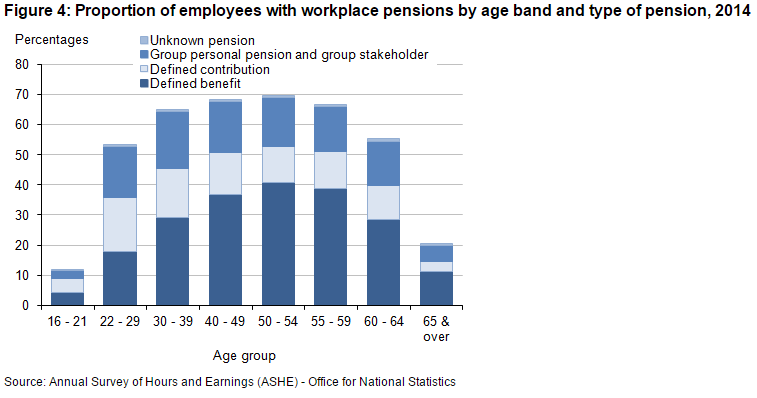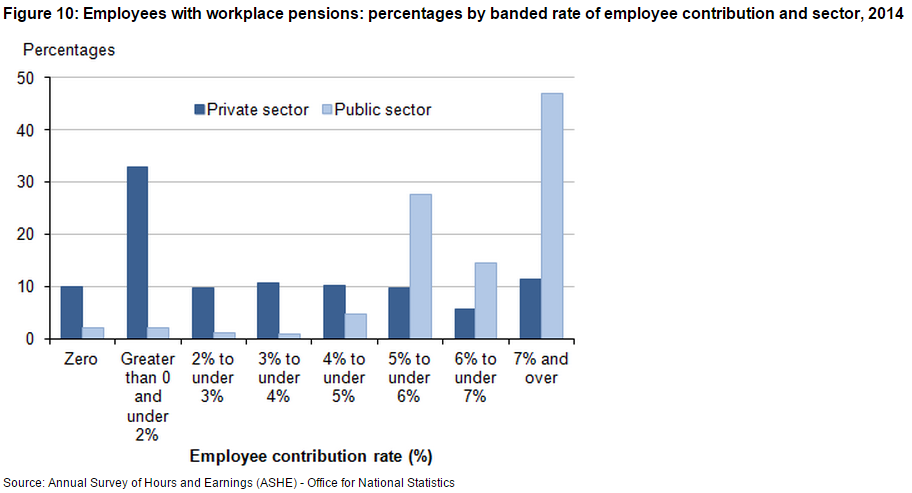Data released by the Office for National Statistics give more evidence auto-enrolment is driving up participation in pension schemes, but a growing proportion payments to defined contribution schemes languish at 2 per cent, with public sector contributions outpacing private.
The headline figures appear to be good news: we are now seeing the highest proportion of employees in workplace pensions since the series began in 1997 – 59 per cent is this year's figure, up from last year's 47 per cent.
But as this rising 'popularity' has been driven by occupational defined contribution, group personal and group stakeholder pensions, and much of that through auto-enrolment, the actual contribution levels have seen a decline.
In 2014, 33 per cent of employees with workplace pensions contributed an amount less than 2 per cent, compared with 11 percent contributing a similar amount in 2013. Defined benefit, meanwhile, continues to lose share over time.
Perhaps unsurprisingly, pensions minister Steve Webb focused on the membership figure which he described as "stunning" in a statement released by the Department for Work and Pensions today, and attributed the growth in membership "in no small part to the success of automatic enrolment".
The headline figures appear to be good news: we are now seeing the highest proportion of employees in workplace pensions since the series began in 1997 – 59 per cent is this year's figure, up from last year's 47 per cent.
But as this rising popularity has been driven by occupational defined contribution, group personal and group stakeholder pensions, and much of that through auto-enrolment, the actual contribution levels have seen a decline, given the reform's staggered start.
In 2014, 33 per cent of employees with workplace pensions contributed an amount less than 2 per cent, compared with 11 percent contributing a similar amount in 2013. Defined benefit, meanwhile, continues to lose share over time.
Perhaps unsurprisingly, pensions minister Steve Webb focused on the membership figure which he described as "stunning" in a statement released by the Department for Work and Pensions today, and attributed the growth in membership "in no small part to the success of automatic enrolment".
Uptick in overall membership but DB slides...

Despite this, DB schemes are the most common type of pension, accounting for 49 per cent of all workplace pension pots.
The ONS also notes that membership of DB among the working population has remained at 29 per cent both this year and last.
DB remains the most common type of pension...

The highest levels of DB membership are among those aged 50-54, which also had the highest levels of general pension membership overall.
Nifty 50s flying the flag for DB...

But given the role auto-enrolment has played in raising membership levels, DC membership is likely to represent larger sections of the membership in future – though current average contribution rates have slipped.
The proportion of DC members contributing more than zero but less than 2 per cent to their scheme rose to 47 per cent from 17 per cent in 2013.
Thirty-one per cent of GPP and group stakeholder pension members made similarly low contributions, compared with only 9 per cent in 2013.
Carolyn Saunders, head of pensions at law firm Pinsent Masons, said the falling contributions were due to an influx of members at auto-enrolment minimum levels.
"It's not that people who are already in schemes are reducing their contributions," she said. And Saunders was not convinced that auto-escalation of contributions would be enough to give members adequate pensions.
"To provide a decent pension you need more than 8 per cent," she said. "Substantially more."
Discrepancy in member contributions between the public and private sector...

Back to the blog














